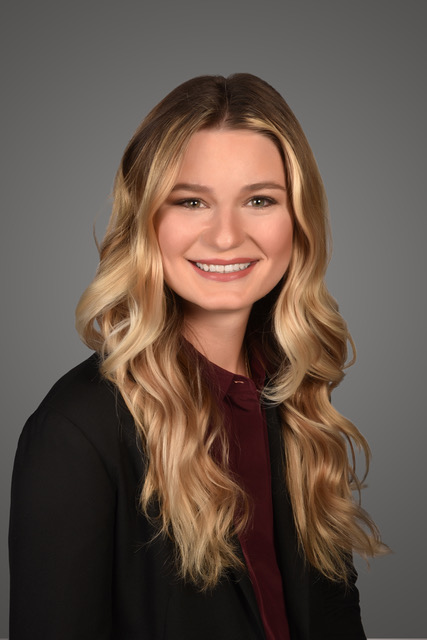 BY Michael R. Alexander, Esq. and Kianna Sitarski, Esq., Brown & Fortunato, P.C.
BY Michael R. Alexander, Esq. and Kianna Sitarski, Esq., Brown & Fortunato, P.C.
As healthcare costs across the United States continue to rise, healthcare providers are feeling the financial squeeze associated with increasing costs of providing necessary products and services coupled with the trend of decreasing reimbursement rates paid out from patient healthcare plans. One method by which providers and healthcare systems may ease this financial burden is through participation in the 340B Drug Pricing Program (the “340B Program”), a program enacted by Section 340B of the federal Public Health Service Act (42 U.S.C. 256b) and administered by the United States Health Resources & Services Administration, Office of Pharmacy Affairs (“HRSA-OPA”).
 In summary, the 340B Program allows qualified, enrolled providers, known as Covered Entities, to buy certain outpatient “340B Drugs” at a discounted rate from drug manufacturers. Under the 340B Program, the Covered Entity may bill an eligible patient (or a qualified patient’s healthcare plan, including both commercial and federal healthcare programs) for the 340B Drugs and collect the full market-rate price when the drugs are dispensed. This differential, often referred to as “340B Savings”, is designed to allow the Covered Entity to “stretch scarce federal funds” and to reduce the financial burden for medical care for uninsured, under-insured, and low-income patients, without compromising patient care.
In summary, the 340B Program allows qualified, enrolled providers, known as Covered Entities, to buy certain outpatient “340B Drugs” at a discounted rate from drug manufacturers. Under the 340B Program, the Covered Entity may bill an eligible patient (or a qualified patient’s healthcare plan, including both commercial and federal healthcare programs) for the 340B Drugs and collect the full market-rate price when the drugs are dispensed. This differential, often referred to as “340B Savings”, is designed to allow the Covered Entity to “stretch scarce federal funds” and to reduce the financial burden for medical care for uninsured, under-insured, and low-income patients, without compromising patient care.
Eligibility, Enrollment, and Program in Practice
Though the 340B Program is wide in its application, providers and health systems wishing to participate must satisfy strict eligibility requirements. Section 340B(a)(4) of the Public Health Service Act outlines four primary categories of providers that may qualify as a Covered Entity, including: (i) Federally Qualified Health Centers; (2) Ryan White HIV/AIDS Program Grantees; (iii) Hospitals; and (iv) Specialized Clinics. Quarterly, new providers and health systems falling into the above-described categories may submit an enrollment application to HRSA-OPA for consideration. If the enrollment application is approved, the newly enrolled Covered Entity may begin purchasing 340B Drugs under the Covered Entity’s 340B ID Number, granted by HRSA-OPA upon enrollment. Further, upon enrollment, the Covered Entity “must notify drug manufacturers and wholesalers that [the Covered Entity] will now buy outpatient drugs at 340B prices. The wholesalers and manufacturers verify the [C]overed [E]ntity’s enrollment in 340B [Office of Pharmacy Affairs Information System] and must sell its drugs at or below the maximum price determined by the 340B statute.” Because the 340B Program applies only to the purchase of outpatient drugs, the Covered Entity has two options by which to dispense the drugs to its eligible patients: (1) through an in-house pharmacy and/or (2) through a pharmacy (or pharmacies) contracted with the Covered Entity to dispense the 340B Drugs. Regardless of the dispensation method chosen by Covered Entity for its 340B Drugs, the Covered Entity is required to maintain legal title to the 340B Drugs until it is dispensed to an eligible patient for end use.
While the 340B Program is flexible due to the comparatively limited amount of guidance issued by HRSA-OPA, there are two primary operational program requirements to which a Covered Entity must adhere to maintain its enrollment status. The first primary operational
requirement is that a Covered Entity is required to “prevent diversion [of 340B Drugs] to ineligible patients.” In short, an eligible patient is a patient of the Covered Entity “such that the [Covered Entity] will maintain records of the individuals’ health care… [and the Covered Entity] will document in the record the care provided and, when appropriate, the prescriptions written.” This definition extends to patients of any employee or contracted provider of the [Covered Entity]. While a Covered Entity may provide both medical and prescription products and services to ineligible patients, the Covered Entity must not use its 340B Drug inventory to do so.
The second primary operational requirement is that a Covered Entity must “prevent duplicate discounts.” Under 42 USC 256(a)(5)(A)(i), “manufacturers are not required to provide a discounted 340B price and a Medicaid drug rebate for the same drug. [Covered Entities] must have mechanisms in place to prevent duplicate discounts.” To ensure these duplicate discounts are not offered, Covered Entities must “carve-in” Medicaid as an accepted payor for 340B drugs, or alternative, Covered Entities may “carve-out” Medicaid and not accept Medicaid as a payor for 340B Drugs dispensed to eligible patients.
Future of the 340B Program
Though the 340B Program has many eligibility and operational requirements, each Covered Entity has significant discretion in how it utilizes the realized 340B Savings. As a result of the financial benefits and flexibility of the 340B Program, participation and enrollment among providers and health systems continues to grow in popularity. With this growing popularity, state legislators and private party actors (specifically commercial healthcare plans and drug manufacturers) often assume opposing positions to shape the 340B Program, resulting in a litigious push and pull that may impact the benefit Covered Entities realize from their participation in the 340B Program in the future. Moving forward, Covered Entities should ensure that their existing 340B Program enrollment and related contracts remain compliant with these new developments.


